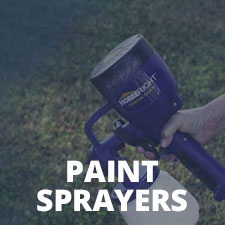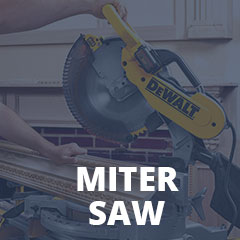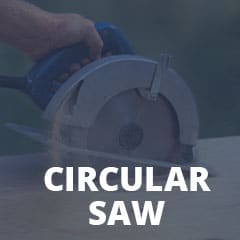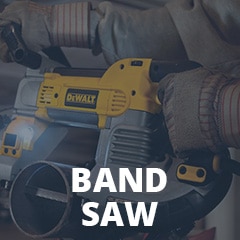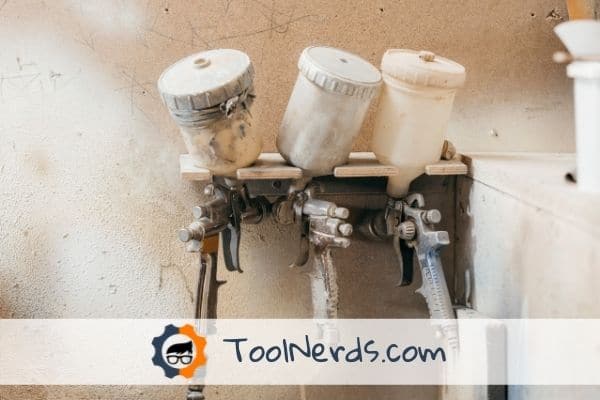
Knowing how to clean dried latex paint from a paint sprayer properly can be a machine lifesaver. Since spray guns are not cheap, it’s important that we care for them properly to prolong their lifespan and keep us spraying for longer.
Sure, we should clean our paint sprayers straight after use. However, we’re only human after all and sometimes this task is forgotten, or ignored. The result is caked-on paint on an expensive tool. Yikes.
Not to worry, though, because here we cover the correct technique for removing dried paint from a paint gun.
Hint: It’s not going hell for leather with screwdrivers and the like trying to remove it. Think of the damage you could cause!
Cleaning Dried Latex Paint From a Paint Sprayer: A Step by Step Guide
This generic guide covers both airless and HVLP units. To avoid invalidating your sprayer’s warranty, be sure to check the individual manufacturer’s guidelines too.
What You Need to Follow This Tutorial
Get everything together before you start so that you’re well prepared.
-
- Your paint sprayer.
- Coveralls, gloves, and eye goggles.
- Drop cloth.
- Garden hose.
- Two buckets.
- Soft-bristled cleaning brush
- Pliers.
- Mineral spirits (just in case).
- Cleaning cloth.
Safety Concerns
Regardless of the type of sprayer you’re using, safety is paramount. Make sure that your spray gun is disconnected from the power source before dismantling to prevent electric shocks.
Even though you’re not actively spraying, you’re still working with paint so guard yourself by wearing full protective gear throughout the process. Lay down a drop cloth to protect your workshop floor or garden (if working outdoors).
This tutorial focuses on cleaning the sprayer with water and a soft brush. Latex is a water-based formula and water is all you need. However, if you do come across an especially stubborn piece, apply a very small amount of mineral spirits to the area with a cloth and rub gently.
Try to avoid doing this though as harsh chemicals can cause tubing and gaskets to wear out faster than normal. Additionally, if you do use solvent, thoroughly rinse the area with plain water afterwards.
Step 1: Nozzle Cleaning
1. You won’t get far if you don’t start at the business end because you’ll use it to flush the rest of the system. The fluid nozzle usually contains the smallest orifice on the machine and is a great place for dried latex to hide. Start off by wetting the tip with the garden hose.
2. Take the soft brush and gently remove any coating that you see. Switching between the hose and the brush should let you see your progress.
3. Once the exterior of the nozzle is clean, peek inside and see if you notice any trapped paint flakes. If you do, take your pliers and carefully remove the larger pieces.
4. Be sure to dispose of any leftover paint or wastewater responsibly.
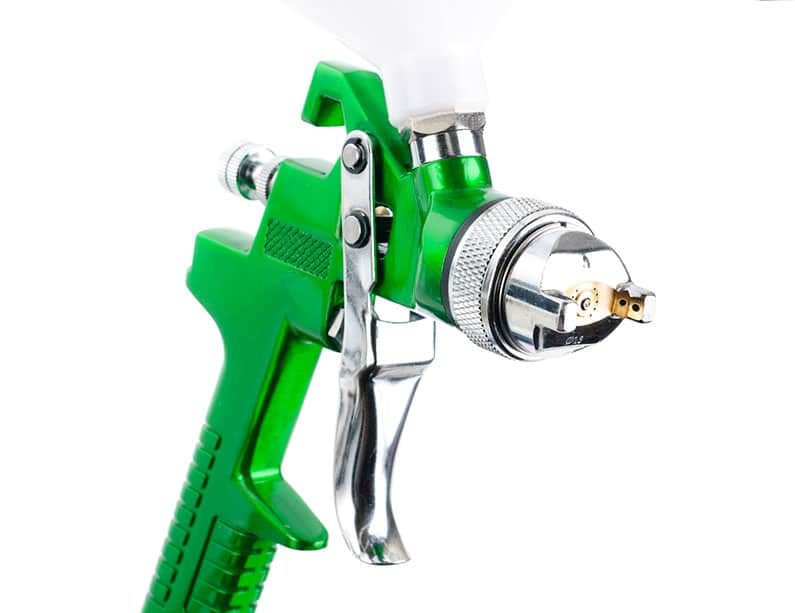
Step 2: Clean the Filters
1. If your paint sprayer has a removable filter (many HVLP units won’t) remove it carefully.
2. You likely find that the filter has the most dried paint in the entire spray gun because all the viscous fluid passes through the filter before being atomized at the nozzle. This makes the filter the hardest component to clean. Grab your garden hose again and rinse the filter to remove any latex paint that’s still wet.
3. Keep flushing the filter with water until the liquid passes with no resistance. Note that you may need to soak your filter in water to aid this process.
4. Once you’re sure the filter is clean, put it back in the sprayer.
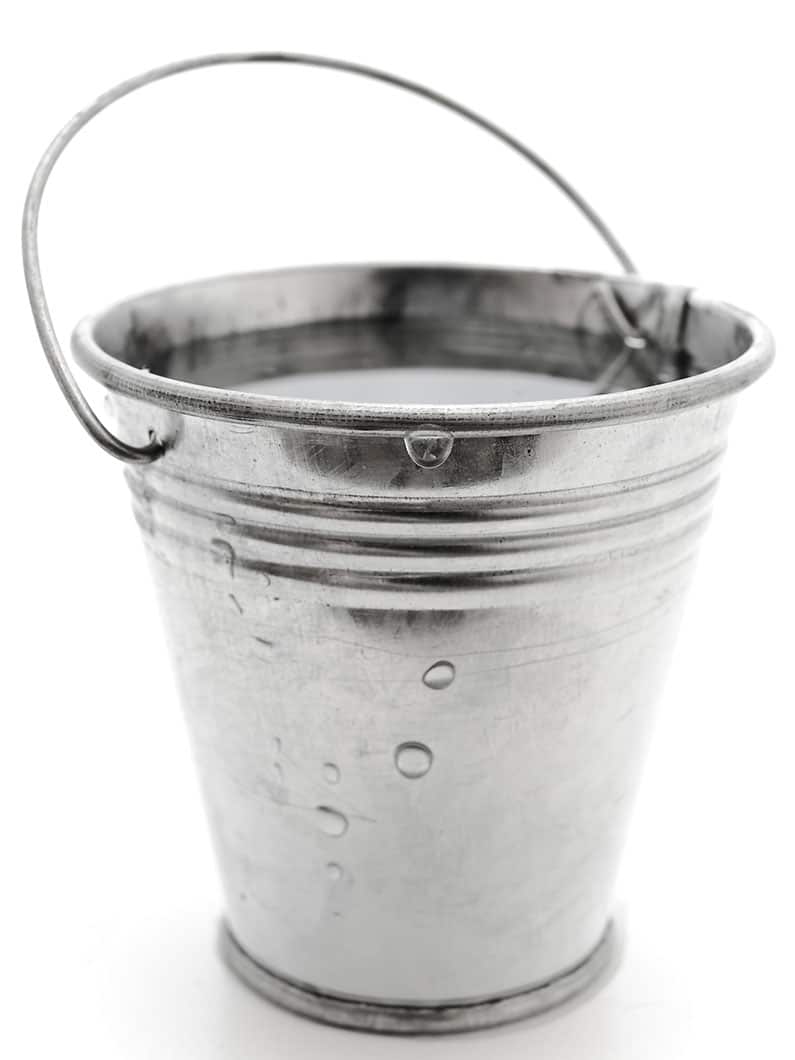
Step 3: Flush The System
1. With the key components free from clogs, it’s time to flush the sprayer’s internals with water.
If using an HVLP device with a paint cup, fill the paint container with water and set the machine to spray into the waste pail. If the container nears empty and the liquid expelled is still not running clear, repeat the process until it does.
For airless units, fill one pail with clean water and use the other pail as a waste receptacle. Place the flexible uptake tube in the water and set the machine to prime for a couple of minutes so the liquid circulates through the device.
2. Once you’re satisfied it has cycled a few times, set the gun to spray and evacuate the fluid into the waste bucket. Inspect the liquid to see if it ran clear. If not, repeat step one methodically until it does.
Step 4: Inlet Strainer Cleaning
1. More commonly found on airless sprayers (although you will occasionally see them on HVLPs with flexible uptake tubes), inlet strainers are another kind of filter that need attention.
Situated at the base of the uptake hose, inlet strainers eliminate any debris in the paint. Hopefully, the thorough rinse from step three removed most of the dried paint. However, if some remains, gently scrape it away with the brush and rinse again with the garden hose so dried flakes are not drawn into the system again.
Step 5: Final Test, Wipe Down, and Storage
1. By the time you get to this step, you can be fairly certain that your paint sprayer is spick-and-span. However, it’s wise to double-check just in case some flakes have worked their way back into the system.
Run more water through the unit once again, either by filling the paint cup or by placing the flexible uptake tube in a pail of water.
2. Once there’s no more dried latex in your sprayer, it’s time to give the exterior a little TLC. Dampen a cloth with water and give the exterior casing and hose (if present) a wipe down.
This is also a good opportunity to check for any wear and tear on the outside of the machine.
3. After the machine is completely clean, allow it to air dry before storing it away to prevent any mold from forming.
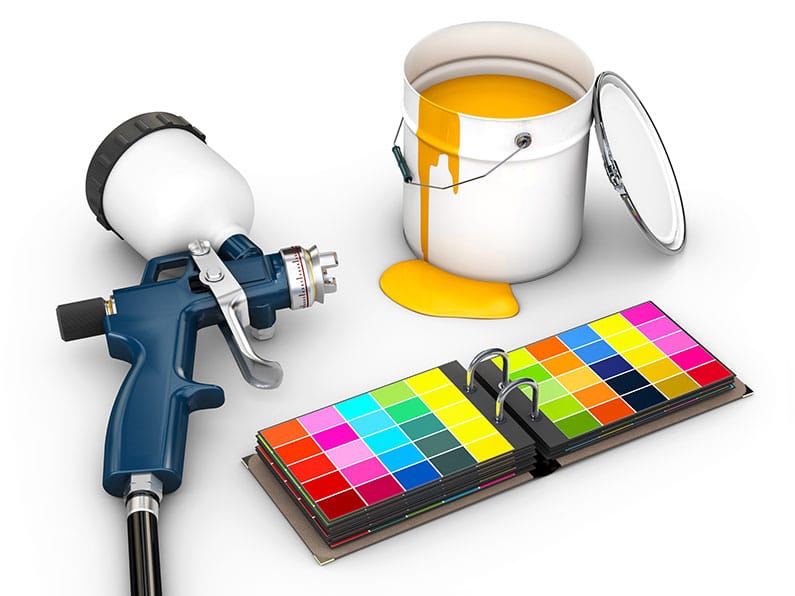
Why Is Dried On Latex a Problem?
It’s not dried paint set to the sprayer’s exterior that’s the problem, but the paint lodged in the gun’s nozzle, filter, or uptake tube. These blockages inhibit performance and could cause irreparable damage if you continue to run your machine.
If you clean your paint sprayer properly after every use, latex coating can’t dry on the gun’s internal mechanisms and cause these problems.
Normal water can be used to clean wet latex paint. There’s no need for harsh chemicals (mineral spirits and thinner) which could damage the spray gun’s parts.
What Type of Paint Sprayers Can Handle Latex?
As latex falls midway in the density spectrum, not all paint sprayers can cope with this medium. This is important to note as different spray guns require slightly different cleaning methods.
For example, a device like the handheld Wagner FLEXiO 590 can handle unthinned latex, which is fairly unique in an HVLP machine as many lack the power. It’s also easy to clean the unit’s awkward areas thanks to the Lock-N-Go system.
An airless paint sprayer such as the Graco 495 handles mid-viscosity paints like latex well too due to a high-pressure output. This said, airless devices are harder to clean because of the extra components that keep them up and running.

Conclusion
Forgot to clean your paint sprayer immediately after use, for whatever reason? You’re not alone. Hopefully, this guide has shown you how to remove dried latex from a paint sprayer and your shooter is still in good condition.
Remember that water and a soft cleaning brush are your best friends in this process. Use a solvent if you absolutely must, but rinse the device with fresh water afterward.
Know someone who needs to know how to clean dried latex paint from a paint sprayer? Feel free to share this guide with your forgetful buddies!
Cleaning Dried Paint From a Paint Sprayer FAQs
Q: How Do You Remove Latex Paint After It Dries?
Dried latex coating can be stubborn to remove from a paint sprayer. The best technique involves plenty of water and patience. This handy step-by-step guide will put your sprayer right and your mind at ease.Q: Can You Leave Paint in a Sprayer Overnight?
No. Most paint sprayer manufacturers advise that their machines should be cleaned immediately after use. Dried paint could interfere with the unit’s functionality and performance.Q: Will Acetone Remove Dried Latex Paint?
Acetone will remove dried latex paint, but only use it as a last resort. Prolonged use of acetone could cause components to wear out faster than normal. Since latex is a water-based coating, the majority of the time, it can be cleaned with normal water and a soft scrubbing brush.Q: How Do You Clean a Paint Gun After Use?
It depends on both the type of paint gun and the paint that was used. For example, procedures are different with airless sprayers than they are with HVLP units. If you’re not sure how to clean your paint gun properly, click here for all the essential details.

